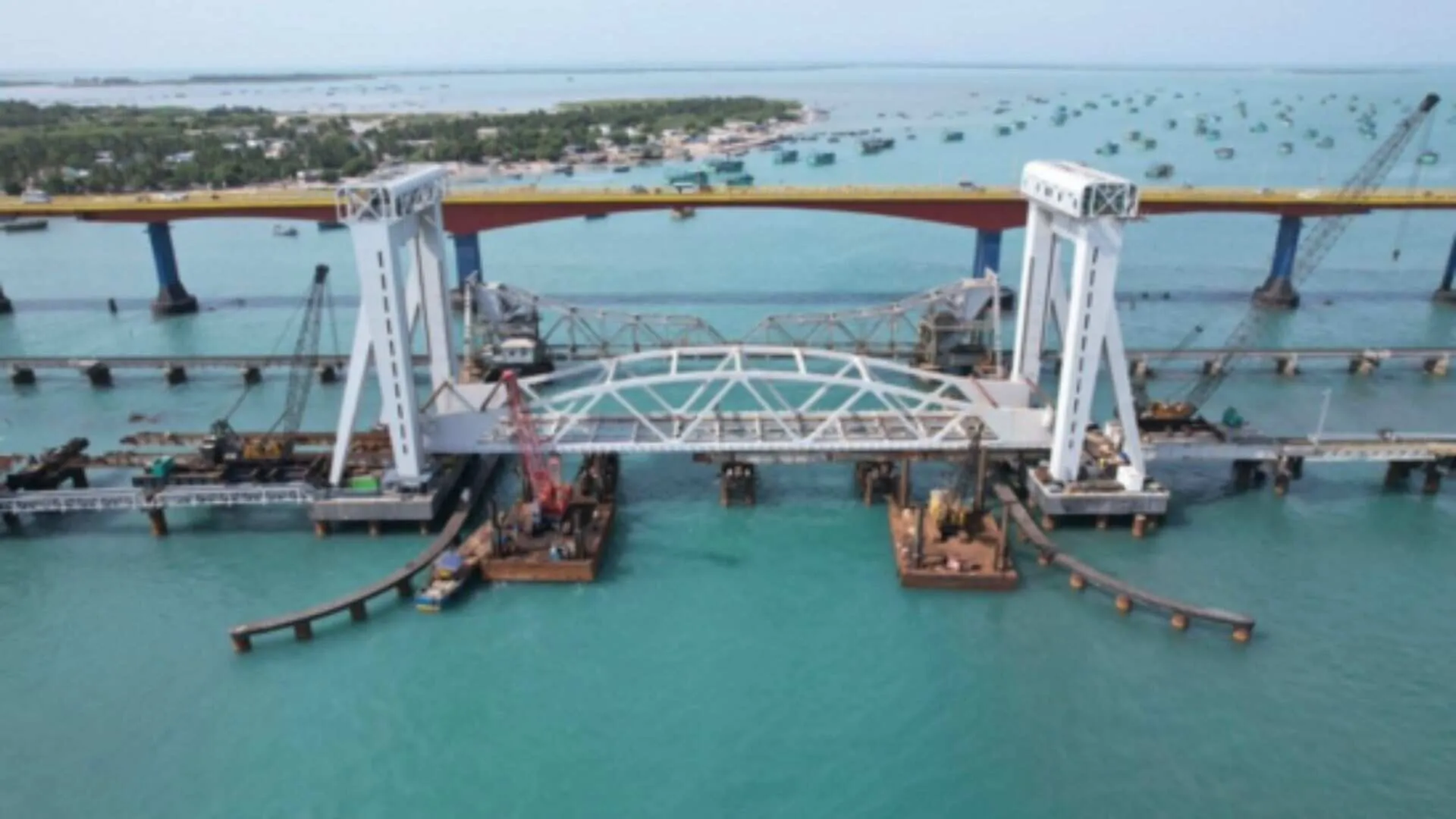Prime Minister Narendra Modi will dedicate the newly constructed Pamban Bridge in Tamil Nadu on April 6, marking the occasion of Ram Navami celebrations. The new bridge, measuring 2.07 km across the Palk Strait, is India’s first vertical-lift railway sea bridge and is expected to improve connectivity between Rameswaram Island and the mainland.
From Historic Icon to Modern Marvel
The old Pamban Bridge, with its cantilever and Scherzer Rolling Lift span, was built in 1914 and was an important lifeline between the Indian mainland and the island. However, due to increasing demand for transport and damage from the marine environment over a period of time, the old bridge was not sufficient anymore.
Knowing the need for a modern replacement, the government in 2019 approved the construction of the new bridge. Rail Vikas Nigam Limited (RVNL), the organization that operates under the Ministry of Railways, implemented the project with focus on technological advancement and sustainability.
Key Features of the New Pamban Bridge
The new bridge makes use of cutting-edge technology and state-of-the-art materials to ensure long-term performance:
- The bridge features a 72.5-meter navigational span that can be raised to 17 meters, making it easy for big ships to pass.
- It is constructed 3 meters above the previous bridge, which increases sea traffic access.
- Using corrosion-resistant stainless steel and high-quality protective paint coating, the structure is intended to face the harsh marine climate.
- The substructure is designed for two railway lines, although the current superstructure accommodates only one line.
Why a New Bridge Was Needed
The old Pamban Bridge could no longer accommodate contemporary rail traffic. The new bridge is designed to:
- Carry heavier loads and faster trains.
- Enable unobstructed maritime passage.
- Address future needs with its expandable track capability.
- Engineering Methods and Innovation
- Several advanced methods were employed in building the bridge:
- Use of stainless steel and durable coatings to withstand corrosion.
- Employment of the Auto Launching Method and hydraulic jacking to position the lift span irrespective of climatic conditions.
Challenges Faced During Construction
The building process underwent challenges such as rough seas, cyclones, earthquakes, and transport difficulties due to it being undertaken in a remote region. Nevertheless, engineers evaded all these challenges using innovative designing and constructing methods with full security and precision.
The spanking new Pamban Bridge is a big milestone in the infrastructure odyssey of India. Equalling global engineering giants such as the Golden Gate Bridge and the Oresund Bridge, the bridge symbolizes the ability of India to conquer difficult geographical hurdles.
Projected to stay in existence more than 100 years, the vertical-lift bridge not only improves local access but also commemorates the country’s growing power when it comes to rail and maritime infrastructure.






















